
Japanese writer and publicist based in Eindhoven, The Netherlands
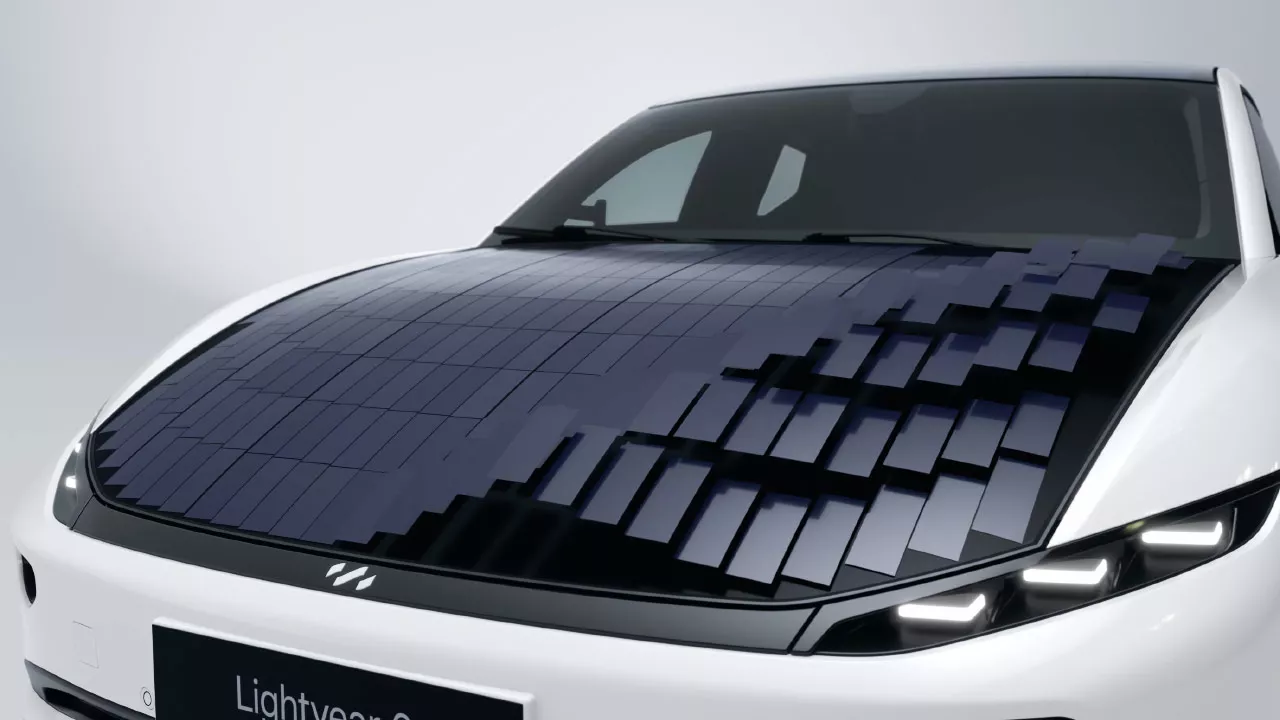 Innovative cars are born one after another in the Netherlands. The "Lightyear 0", a passenger car that can run the extended range on sunlight, was also born at the "Automotive Campus" in Brabant. (Photo: Lightyear)
Innovative cars are born one after another in the Netherlands. The "Lightyear 0", a passenger car that can run the extended range on sunlight, was also born at the "Automotive Campus" in Brabant. (Photo: Lightyear)
Dutch companies are not known as European passenger car brands, but in fact, the Netherlands is a world leader in innovative technologies that will create the future of automotive. An important base for it is the "Automotive Campus" in Helmond, North Brabant, a southern province of the country. Large companies, as well as start-ups and universities, come together here to collaborate on cutting-edge automotive technology development.
Here we will introduce the latest automotive development, which has attracted attention from all over the world, and the reason why the innovation is occurring in this campus.
The next-generation automotive, "ZEM" attracted attention from all over the world in July this year. It was developed by the team "TU/Ecomotive", consisting of 33 students mainly from Eindhoven University of Technology (TU/e).
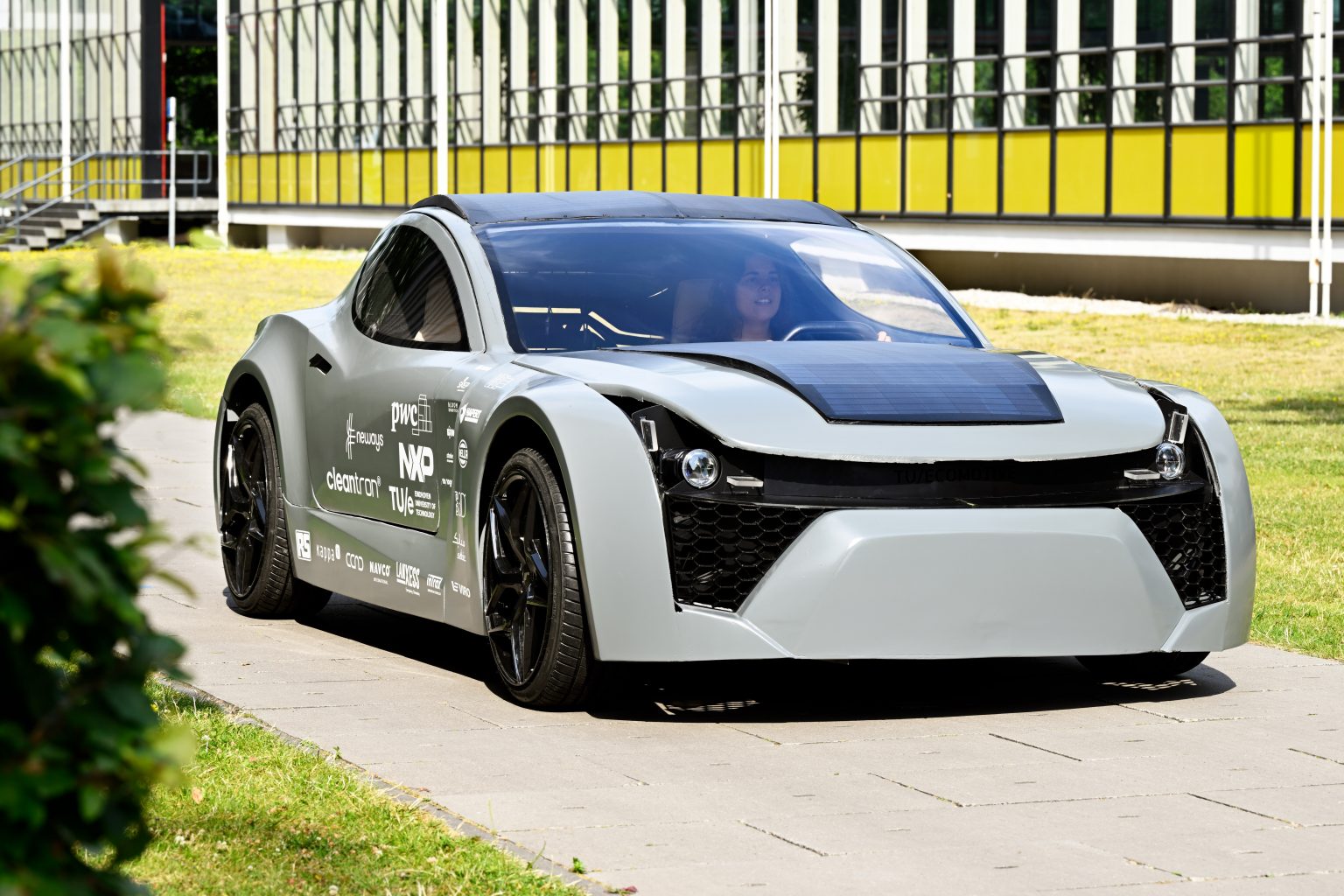 Photo: Bart van Overbeeke
Photo: Bart van Overbeeke
The most notable point is the carbon dioxide (CO2) capturing system that uses a technology called "Direct Air Capture (DAC)" specially developed by TU/Ecomotive. While driving, the air flows through the filter by making use of the aerodynamics of the car, and the chemical substance in the filter captures CO2 and accumulate it in the hood.
When the vehicle is driven at an average speed of 60km/h for 8 hours a week, about 2kg of CO2 is captured in one year. This is equivalent to 10% of what one tree can capture in one year.
“This may not seem like a lot, but think about the impact when all the cars are able to do it.” Ruvimbo Michelle Mukonoweshuro, one of the team members and a student from Zimbabwe says.
The captured CO2 can be transferred to the gas tank at the charging station for the electric vehicle and the filter can be cleaned. The collected CO2 can be reused for greenhouse to glow plants etc. We can also turn it into rock by mixing with minerals and putting it under the ground. The buried CO2 is never released into the air again.
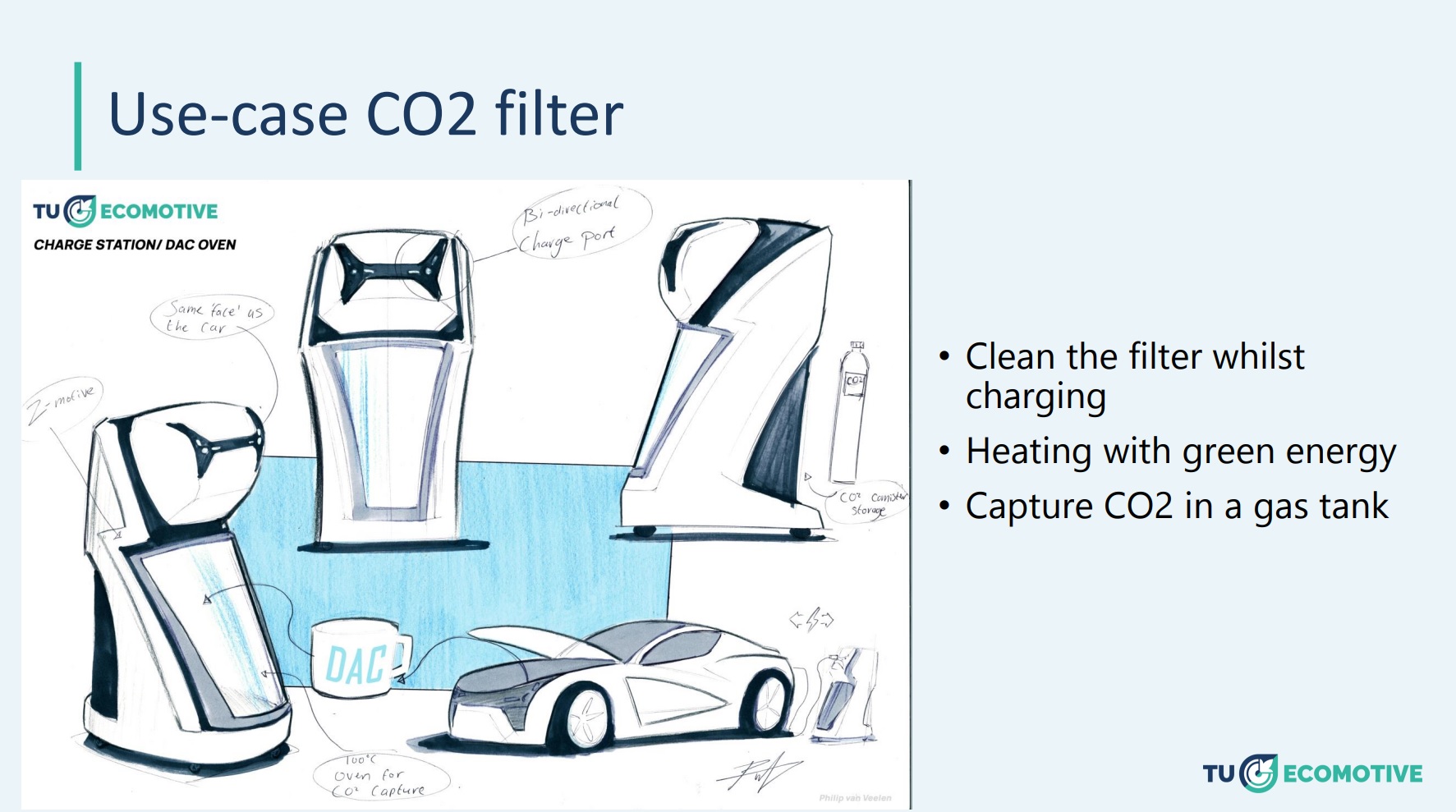 The captured CO2 can be transferred to the gas tank at charging stations for electric vehicles. (TU/Ecomotive)
The captured CO2 can be transferred to the gas tank at charging stations for electric vehicles. (TU/Ecomotive)
Not only capturing CO2 while driving, ZEM was also designed to reduce CO2 emissions throughout the entire vehicle life cycle, from the production to after scrapping.
In the production process, the monocoque body and chassis are formed using 3D printing technology to reduce material waste. The process makes the investment much cheaper and the production time much shorter than the conventional manufacturing process using molds. By using recyclable plastic, the material can be shredded and reused.
The exterior is coated with carbon black (a raw material made from carbon) from old tires, and the leather made from pineapple fibers is used for interior. The car entertainment equipment such as audio is also recycled products.
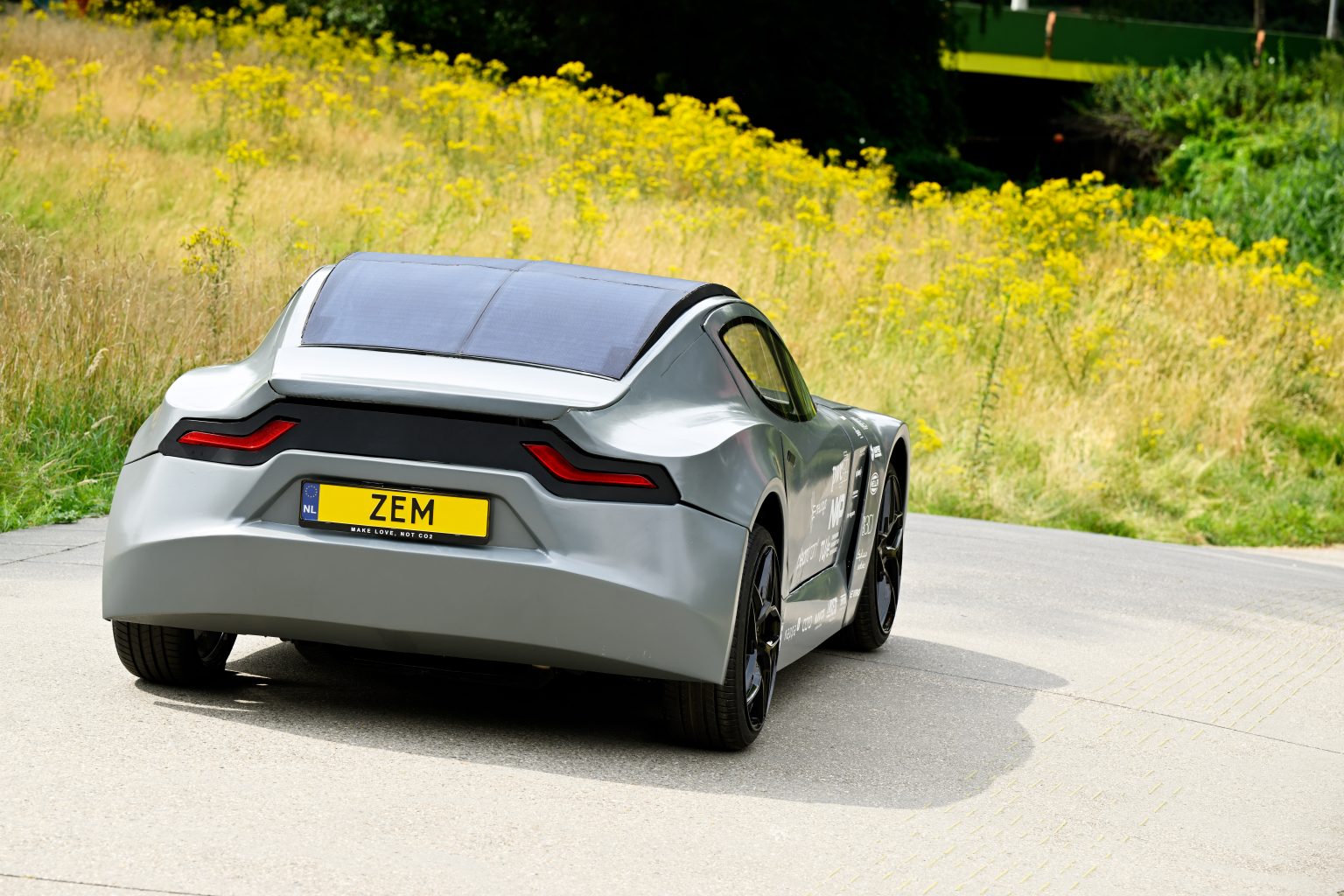 Photo: Bart van Overbeeke
Photo: Bart van Overbeeke
Solar panels are installed on the roof, and it can run 60-70 kilometers on charging from sunlight. The bi-directional charging technology allows the electricity charged in the car to be used at home. The idea is to use the car as a battery outside the home.
Since its release as a concept car, "ZEM" has been featured in media around the world, and this summer, it toured the United States to introduce its innovative ideas. TU/Ecomotive is partnered by more than 50 companies, including NXP, a major semiconductor company in the Netherlands. A new team has been already formed for the next car and they continue the challenge of creating the future "ecomotive".
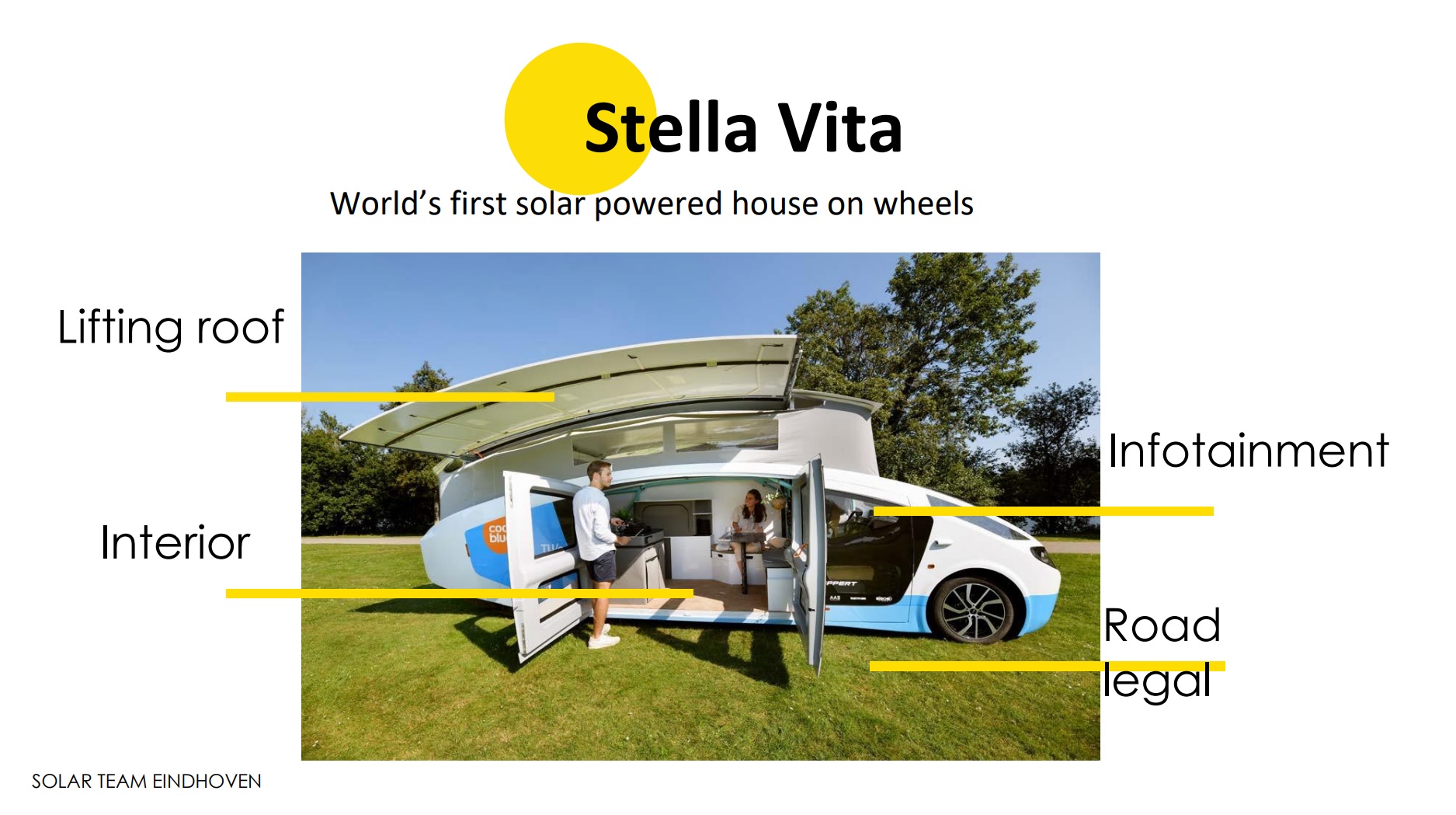 The future of travelling can be enjoyed without worrying about gas or charging stations. (Source: TU/e Solar Team)
The future of travelling can be enjoyed without worrying about gas or charging stations. (Source: TU/e Solar Team)
TU/e also has a "solar team" that has developed several solar cars over the past decade. This team of about 20 students, like TU/Ecomotive, aims to shift from fossil fuels to sustainable solar energy with the goal of reducing CO2 emission.
Last year, the team created the ”Stella Vita”, a solar-powered house. The electricity for driving as well as for the daily life, such as cooking, showering, watching TV etc. is provided by solar panels attached to the roof of the car.
 The moving house "Stella Vita" uses sunlight to provide the electricity necessary for driving and living (Source: TU/e Solar Team)
The moving house "Stella Vita" uses sunlight to provide the electricity necessary for driving and living (Source: TU/e Solar Team)
It is equipped with a lithium-ion battery with a capacity of 60 kilowatt hours (kWh). The area of the solar panel is 8.8 square meters while driving, but you can open the panel and expand it to 17.5 square meters while stopping at the campsite.
Lightweight materials such as aluminum for the bottom frame and glass fiber for the interior are used, which resulted in the whole weight of 1,700 kg. It has a top speed of 120 km per hour and can travel up to 730 km on sunny days.
The car has already acquired a license plate, and it actually traveled 3,000 km this summer from Eindhoven in the Netherlands to Tarifa in the southern tip of Spain, using only sunlight.
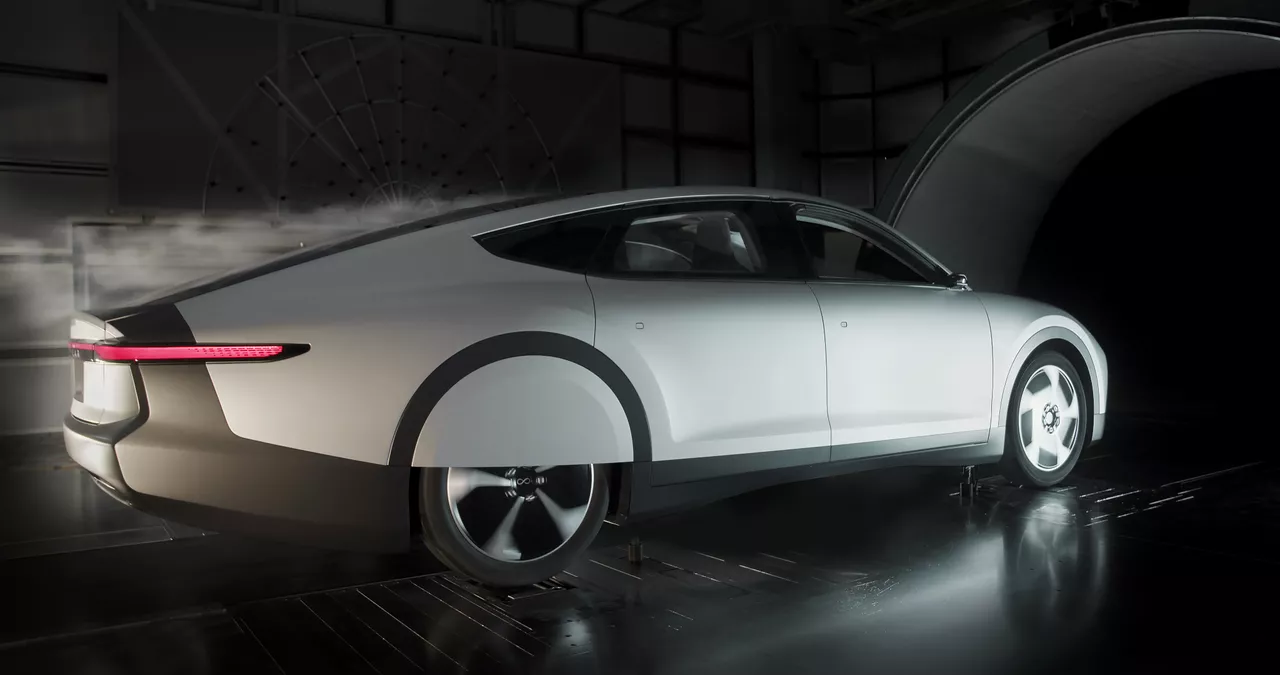 Photo: Lightyear
Photo: Lightyear
Numerous solar car technologies created by the student teams have also been successfully commercialized. This summer, the start-up company "Lightyear" announced a solar car, "Lightyear 0" that can run the extended range on sunlight.
The roof and the hood of the vehicle are equipped with 5 square meters of solar panels. It used to be hampered by the fact that passenger car is too small for the solar panels, but Lightyear made it possible to run 70 km on sunlight by maximizing the energy efficiency.
To minimize the energy losses the motors are put on each of the four wheels, which eliminate de need for energy draining components, such as gearbox and driveshafts. The inverter and motor weigh less than 100kg. Comparing the combined weight of the inverter, motor and differential of “Tesla Model S” , which weighs 240kg, you can see how light it is.
In addition, due to the streamlined smooth body, the air resistance during driving is 0.19Cd (drag coefficient), which is well below the average of passenger cars (0.3-0.5Cd).
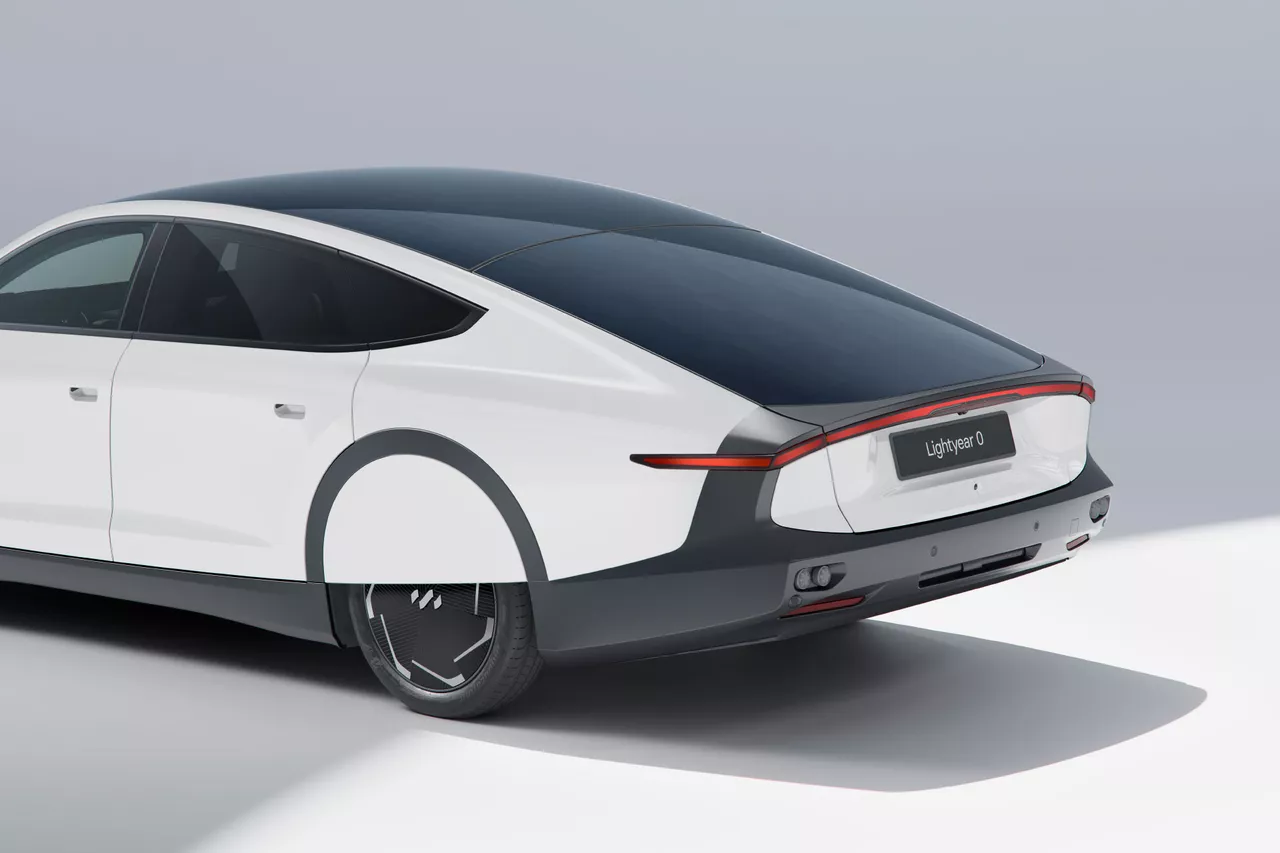 Photo: Lightyear
Photo: Lightyear
By maximizing energy efficiency, the power required to run 100km is approximately10.5kWh. With a full charge, if you commute 35 km per day, you can drive for two months without recharging, even in areas with cloudy weather (7 months in areas with mostly sunny weather). Annually, 6,000 - 11,000 km can be covered by solar energy alone. In addition to sunlight, charging with a plug is also possible. With a household plug, you can run 32km on a one-hour charge.
Lex Hoefsloot, co-founder and CEO of Lightyear said, "The shift to electric vehicles (EVs) is the right direction", but he also points out that the installation of charging stations cannot keep up with the demand for EVs, and the expansion of battery capacity burdens the environment in their production process. "Our strategy is to reverse that approach. 'Lightyear 0' will reduce battery, weight, and emissions per vehicle, while increasing mileage.”
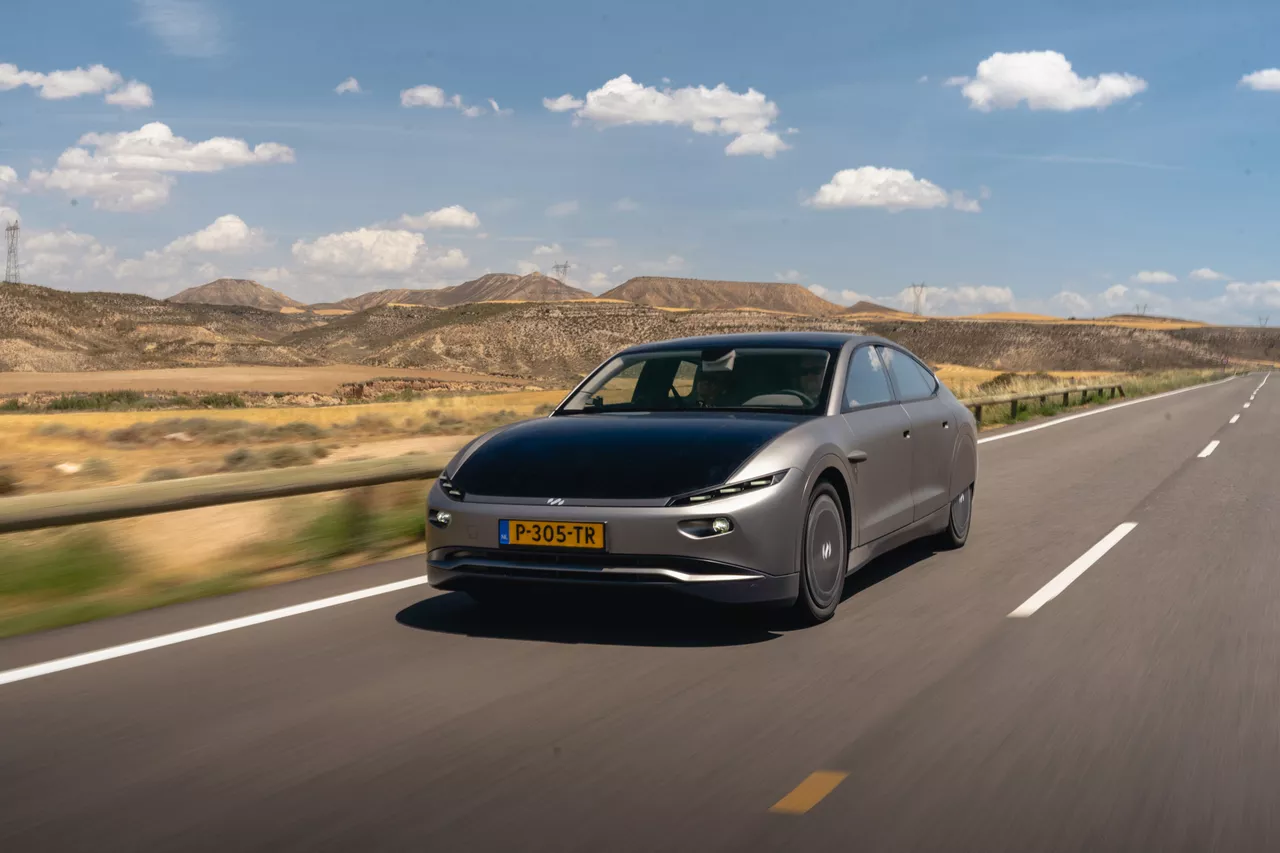 Photo: Lightyear
Photo: Lightyear
Regarding solar cars, the products of Germany's Sono Motors and America's Aptera Motors are also known, but those are small and only suitable for urban use. Lightyear is the world's first family solar car suitable for long distances.
Lightyear 0, which started production in Finland this fall, is scheduled to be delivered in December this year. You'll see them on the streets early next year. The current model is 250,000 euros (about 35million yen), and only available for a few people who can afford it, but “Lightyear 2”, a cheaper model with 30,000 euros (about 4.2 million yen), is planned to be announced in 2024. Thereafter, the Dutch cars may dominate the market after Tesla.
In "Automotive Campus" next-generation cars are being developed one after another. What is the driving force behind the numerous innovations?
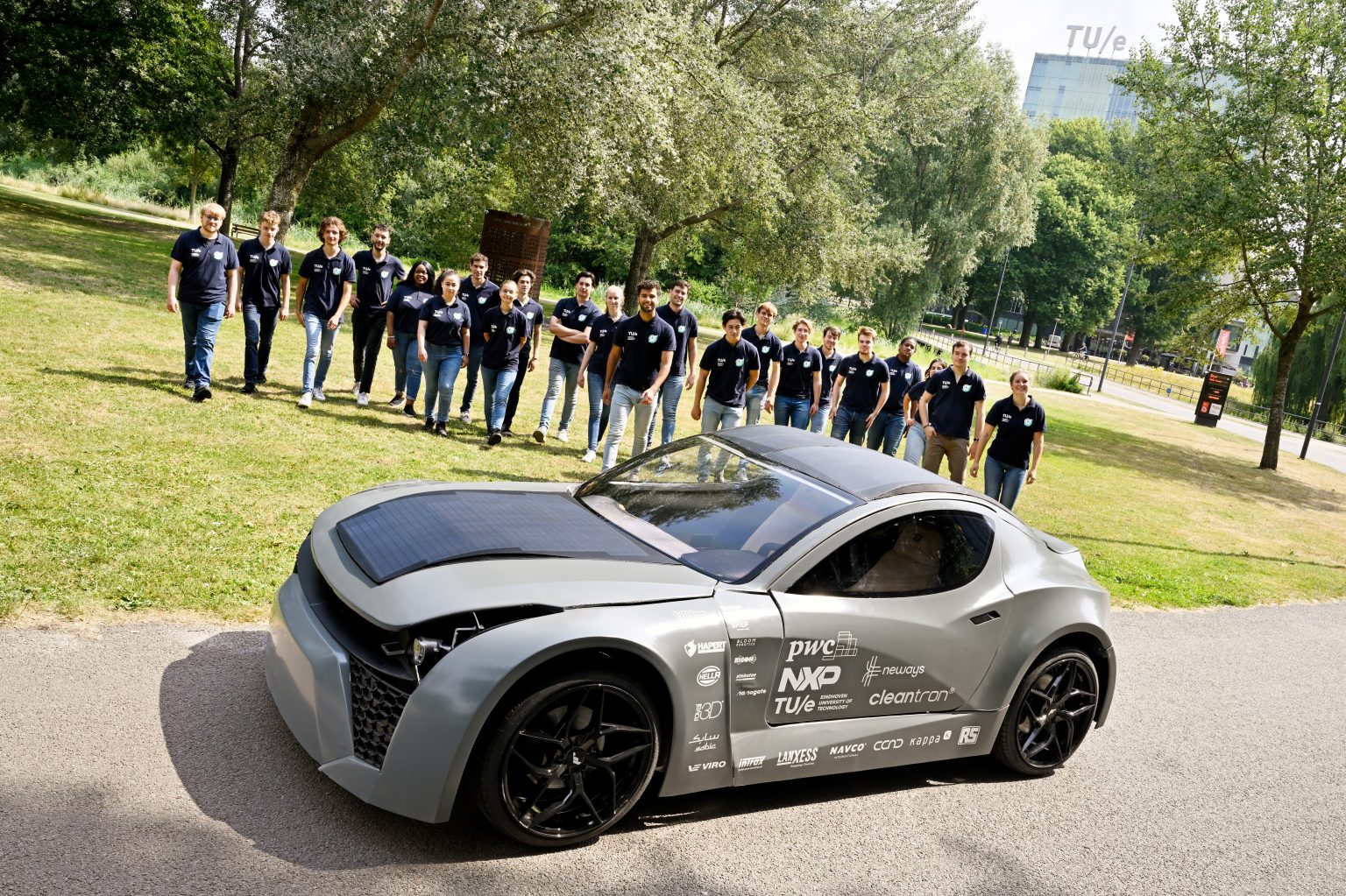 A free research environment that is independent of "universities" and "markets" creates groundbreaking innovations. (Photo: Bart van Overbeeke)
A free research environment that is independent of "universities" and "markets" creates groundbreaking innovations. (Photo: Bart van Overbeeke)
In addition to the large companies and start-ups, students from universities and vocational schools also conduct research and training on this campus. About 600 of the 1,350 people working on campus are students. Through events, workshops, and training, there are many interactions between companies and the students, and they inspire each other.
The TU/Ecomotive and the solar team are project-based teams made up of voluntary students of automotive engineering, industrial design, etc. They sometimes ask professors and experts for advice, but the teams are totally operated by students. What’s more, everything they do for the team is done next to their study at the university.
“The strength of the team is that we are independent of the 'market' and 'university' and we have complete freedom. Our innovation is 5 to 10 years ahead of the current market." Wisse Bos, a leader of solar team said.
Such a campus where industry, government, and academia gather together is extremely unique in the world. Japanese companies such as Sekisui Europe B.V. and MIRAI DATA are also based on the campus, and international collaboration is flourishing.
How about taking on the challenges of the future automotive society while collaborating with a wide range of automotive-related companies and excellent students on the same campus? If you are interested, please contact to the email address below.
Contact: Pieter Rahusen New Business Development, Automotive Campus
p.rahusen@automotivecampus.com